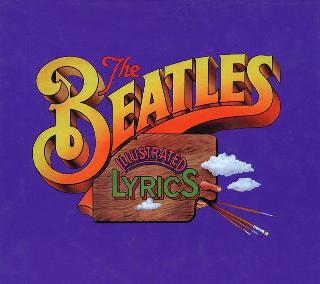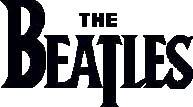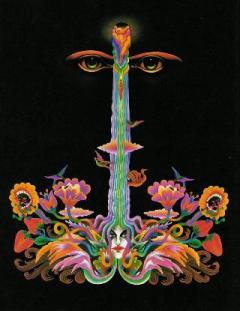Index
Home
Vorige
Can't Buy Me Love
Composer(s) : Lennon and McCartney
Year : 1964
Chords/Tabs: Can't Buy Me Love
Notes on "Can't Buy Me Love" (CBML)
KEY C Major
METER 4/4
FORM Intro -> Verse -> Verse -> Refrain -> Verse -> Verse (guitar solo) ->
Refrain -> Verse -> Outro (complete ending)
GENERAL POINTS OF INTEREST
Style and Form
- We have here a very standard long form with two refrain-like bridges
separated by two verse sections, one of which contains a guitar solo.
However the combination within the same song of a verse section so
traditionally bluesy with a refrain/intro/outro that is equally so
*non* bluesy is far from routine and makes this number truly
ground-breaking in its own quiet way.
Harmony and Melody
- The verse section uses only the standard three chords of the 12-bar blues
form: I, IV and V (C, F, and G Major respectively). Its melody strictly
uses flat thirds and sevenths (notes E- and B-flat) and this makes for
similarly traditional-blues cross-relations with the E- and B-naturals of
the chords below it.
- By contrast, the intro/outro heavily uses the iii and vi chords (e and
a minor), and its melody strictly employs the diatonic third of E-natural,
both of which connote something other than straight-up blues. Yet, the real
kicker comes in the refrain where these two modally different worlds of the
verse and intro/outro are starkly contrasted directly with each other in
alternation.
Arrangement
- The melodic line plays off a virtually continual stream of syncopation
against the steady four-in-the-bar jazz beat of the accompaniment. The
sharp angularity of this is somewhat softened by the effect of Paul's solo
vocal being double-tracked from end to end.
- George's guitar solo makes an uncanny first impression of genuinely smooth
improvisation, but hearing the series of broadcast and live performances of
this song will convince you that it was, alas, practised by rote before hand.
- The use of sizzling cymbals everywhere in the song *except* the intro and
outro is a typical Beatles example of texture used for purposes of formal
articulation.
SECTION-BY-SECTION WALKTHROUGH
Intro
- We've seen quite a number of early Beatles songs with 'in medias res'
of openings (e.g. "All My Loving" and "She Loves You" among others) but
this one is one of the most audacious, with the true identity of the home
key not becoming clear until close to the end of the intro.
- The section is an unsual six measures long. Under more tritely ordinary
circumstances it would actually be a full eight measures (try tacking two
measures of C Major onto the end of it before starting the verse -- in fact
this is exactly what happens in the outro) but, again in somewhat of a
trademark move of theirs, this intro is ellided with (or interrupted by)
the beginning of the verse:
Melody: CEG|G |E |G |E CEG|G |E ||(verse)
Chords: |e |a |e |a |d |G ||C
C: iii vi iii vi ii V I
- Paradoxically, the primary melodic notes outline the C Major home-key
triad almost as slavishly as might a bugle call, while in contrast, all
the chords up until the G in measure 6 are all minor. Also note how the
melodic "logic" of the triadic outline lets you readily accept those jazzy
but otherwise "gratuitously" dissonant 11th and 13th chords on d and G
respectively.
Verse
- The verse sections are all strict 12-bar blues frames. The one slightly
unusual detail is in the re-appearance of the I chord being delayed until
the final measure instead of coming back, as is more typical, in m. 11:
m. 1
|C |- |- |- |
I
m. 5
|F |- |C |- |
IV I
m. 9
|G |F |- |C |
V IV I
- In addition to the blue-note cross relations (e.g. the melodic E-flat against
the E-natural of the C Major chord in m. 1), there are several appoggiaturas
which spice up the otherwise simply chords chords. Examples include 'D'
on the downbeat of m. 2 and 6, the G on the downbeat of m. 5 and 1.
- The halting of the ensemble for an instant right after the downbeat of m. 10
(as in "I don't care too [Brrr-UMP!] much for money") is crisply executed,
and a great example of the sometimes eloquent power of silence; the better
to listen to your heart beating :-).
Refrain
- The refrain is very similar to the intro, but is a more square eight
measures long, and parses neatly into four brief 2-measure phrases. The
words make a poetic 'ab-ac' pattern that is echoed by the music itself:
Melody: CEG|G |E ||E-flat D|C CGE|
Chords: |e |a ||C |-
C: iii vi I
|G |E ||D F |G ||(next verse)
|e |a ||d |G ||C
iii vi ii V I
- The stark interjection of those bluesy E-flats in measure three amidst the
cheerier E-naturals both earlier and later in the section is perhaps the
most distinctive detail of the entire song.
Guitar Solo
- This is one of George's great early solos and I'd place it right up there
with the one in "Till There Was You" in terms of being understatedly just
right for the context. I especially like the momentary lapse into a
paraphrase of the tune in measure 9.
- In between the preceding verse and the beginning of this section is inserted
an unnecessary additional measure which serves to better highlight the
commencement of the solo as well as to throw you off guard just a bit.
This is sort of a reverse variation of the ellision gambit.
Outro
- As mentioned above, this section is identical to the intro except that
it includes the additional two measures of C Major that were lopped off
at the beginning by the start of the first verse.
SOME FINAL THOUGHTS
- The appearance of *any* amount of straight-blues in a Beatles original
is noteworthy in and of itself. A recurring theme in our studies has
been John&Paul's predeliction for bluesy cover material, going back all
the way to the Quarrymen era, made ironic by the virtual dearth of such
material in their canonical songbook; you'll find that the number of
12 bar Beatles originals can be counted one less than the fingers of
two hands.
- In this light the timing of CBML shouldn't seem a total surprise, given
both that its B-side, "You Can't Do That", coincidentally happens to also
be largely 12-bar in form, and that the next recording released in England
would be the "Long Tall Sally" EP, a four-song collection three quarters of
which is covers of 12-bar hits made famous by blues-meisters Richard,
Williams, and Perkins.
- What's much more significant though about CBML is how, in context of
early '64, it points to the future at least as much as IWTHYH sums up
the past. CBML contains in its music a fusion of loosely related
styles, and in its lyrics, the transmutation from platitude to poetry
of a certain commonplace re: love and money; both of which innovations
subtly prophecy particularly fertile trends of Beatles experimentalism
to come years hence.
- As with many things in life and love, I've often found it rather awesome and
uncanny to look back later and discover just how early were sown the seeds
of some great harvest.
Regards,
Alan (awp@bitstream.com *OR* uunet!huxley!awp)
---
"Sorry if we hurt your field, Mister" 010592#45
--- H B D
Copyright (c) 1992 by Alan W. Pollack
All Rights Reserved
This article may be reproduced, retransmitted, redistributed and
otherwise propagated at will, provided that this notice remains
intact and in place.
It annoyed Paul when critics and fans suggested the song was about a sex worker.
"You can put any interpretation you want on anything, but when someone suggests
that "Can't Buy Me Love" is about a prostitute, I draw the line," Paul said.
While in Paris, the Beatles stayed at the five-star George V hotel and had an
upright piano moved into one of their suites so that songwriting could continue.
It was here that Paul wrote "Can't Buy Me Love". The song was written under the
pressure of the success achieved by "I Want to Hold Your Hand", which had just
reached number one in America.
When George Martin first heard "Can't Buy Me Love", he felt that the song needed
changing. "I thought that we really needed a tag for the song's ending, and a tag
for the beginning; a kind of intro," Martin said. "So I took the first two lines
of the chorus and changed the ending, and said 'Let's just have these lines, and
by altering the second phrase we can get back into the verse pretty quickly.'"
And they said: "That's not a bad idea, we'll do it that way".
The song's verse is a twelve-bar blues in structure, a formula that the Beatles
seldom applied to their own material.
Ook op A Hard Day's Night:
Ook op 1962-1966:
Ook op Live At The BBC:
Ook op 1:
(c) 2024 Serge Girard


 (c) Alan Aldrigde, The Beatles Illustrated Lyrics
(c) Alan Aldrigde, The Beatles Illustrated Lyrics